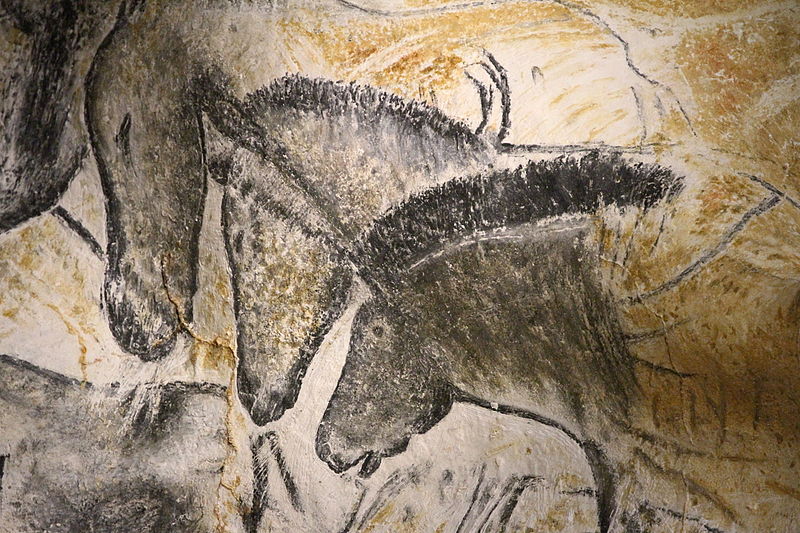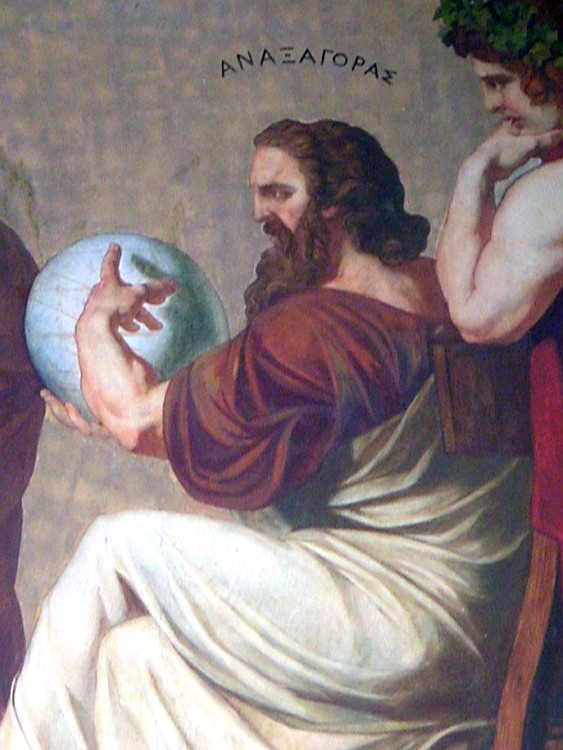
Science is a deeply human activity that people were doing long before the ‘scientific revolution’ a few hundred years ago[1] – but then so is religion. Is there any evidence to suggest which came first? Did early human beings find themselves thinking deep thoughts about the meaning of the universe, then become motivated to investigate the world around them more intensively, or did they start out by investigating the world and find that deep questions flowed naturally out of that investigation?
I’m sure a number of psychologists and anthropologists would love to answer this question, but a scientist and artist have also recently given it a go. Last year, Roger Wagner (the artist) and his friend Andrew Briggs (the Oxford Professor of Nanomaterials) published a book which claims religion came first. Their work is fairly encyclopaedic, but I was given a preview of it in the form of a two-part documentary that will hopefully be released onto our screens in one form or another very soon.
After years of discussing and researching ideas together, Wagner and Briggs have come up with the concept of the ‘Penultimate Curiosity’. They believe they have found evidence that whenever religion flourishes, science and other human endeavours follow in its wake. If religion is the ultimate curiosity about who we are and where we come from, then science is the penultimate curiosity, following in its slipstream like a cyclist in a tour de France peloton.

PanneauDesChevaux By Claude Valette (Own work) [CC BY-SA 4.0], via Wikimedia Commons

Anaxagoras Lebiedzki Rahl By Eduard Lebiedzki, after a design by Carl Rahl [Public domain], via Wikimedia Commons
Much later on, when Jews and Christians began to study in Greek schools, they brought their own ideas to the mix. John Philoponous was a Christian who studied in Alexandria, and objected to some of what he learned. He rejected the convoluted theories that had been invented explain why objects fly through the air, and came up with the idea of impetus. He – not Galileo – was the first recorded person to do the experiment of dropping two different-sized objects from a height to see if they arrive on the ground at the same time.
Essentially, say Wagner and Briggs, science is based on a series of ideas that developed out of a dialogue between different religious beliefs, and the basic human need to make sense of the world by reaching out beyond the horizon of what we can see. A subtext of the book and films is also that science and faith are more than compatible, but one feeds off the other. Occasionally science thinks it can overtake religion, becoming the ultimate curiosity. This reaching for meaning within science itself (or seeming to do so) can cause the pile-ups that echo throughout history – Galileo’s tangle with the church being one of the most famous ones. There have been people along the way who have warned against the hazards of science trying to overtake religion, and made great efforts to show that the two can co-exist in harmony – not a static relationship but one that is always moving forward with science in the slipstream of religion.
It’s interesting to look at the world from the point of view that Wagner and Briggs have set up. I’m sure other scholars would no doubt tell a different story about science and religion – perhaps one where religion followed in the slipstream of science, or maybe language, or travel, or agriculture, or any number of other human activities. The development of all these forms of culture has been intermingled for so long, and the evidence of how they emerged and matured is so patchy that I’m not sure we will ever be able to tell. It’s worth picking each thread out and finding out how much of a driving force it has been for human development, but for a person of faith like myself the story that religion fuelled the rise of science is a compelling story.
What we can say for certain is that plenty of scientists over the centuries have given religion as a reason for devoting serious amounts of time and resources to exploring the world. We can also say that theological ideas have fed into the development of science, or even prompted some great discoveries. It may be difficult in the end to say whether religion was the primary driver behind science, but I’m not sure it matters which came first.
Many different factors are part of what it means to be human, and it is impossible to separate them out – all of them have played a role in the development of our cultures and societies, and all (Christians believe) are part of God’s plan. Of course I will want to say that faith in God plays a primary part, and everything flows from our relationship with him. There may also be conflict between different human activities from time to time, but that needn’t be the main narrative of history. What should be clear to anyone is that science, religion, and multiple other human activities do seem to move along together – stimulating, challenging and encouraging each other as we ask questions about the world and look for answers.
The Penultimate Curiosity: How Science Swims in the Slipstream of Ultimate Questions is available from Oxford University Press
[1] As Tom McLeish describes in his book Faith and Wisdom in Science (OUP, 2014)




